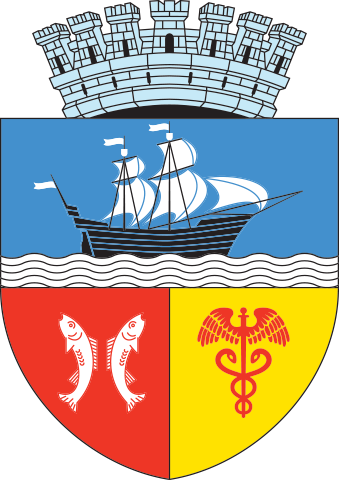Galați is located in the Eastern part of Romania, at the Southern limits of the Moldavian plateau, at 45o 27 '' latitude North and 28o 02 '' longitude East. Located on the left bank of the Danube, it covers an area of 241.5 km2, at the confluence of the Siret (West) and Prut (East) rivers, near Brates Lake , the largest body of water in this part of the country.
The climate is temperate-continental, with an annual average temperature of 10o C, with a variation in winter between 0 - 28o C, and an average in summer around 22o C. Cyclic, at 10 - 12 years, the Danube freezes 5-6 years in a row, 42 days a year on average.
Due to its position, opening to the Romanian Plain and the Northern steppes, winds in the city of Galati are quite frequent in the N - NE and S - SE direction without causing disasters, but influencing navigation.
The city of Galati stretches on three terraces: The city valley, with an altitude between 5-7 m and two others, drawn almost in the shape of fans; the first with an altitude between 20 - 25 m (the core of the medieval city, currently the city center) and the second with altitudes exceeding 40 m (the modern city).
The life of human communities was directly influenced by the Danube, the second longest river in Europe (2,850 km), with an average flow on this sector of 6,199 m3 / s, after receiving upstream the waters of the Siret River with a average flow of 210 m3 / s (the largest tributary in Romania).
Climate
The territory of Galati County belongs entirely to the sector with continental climate (the Southern and Central part, totaling more than 90% of the surface, falls in the land with plain climate, and the Northern extremity representing 10% of the territory, in the land with hill climate). In both climates, the summers are very hot and dry, with frosty winters, marked by strong blizzards, but also by frequent interruptions caused by the advections of hot and humid air from the S and SW that determine intervals of warming and melting of the snow layer. Against the general climatic background, the Siret, Prut and Danube meadows introduce in the values and regime of the main meteorological elements, changes that lead to the creation of a specific meadow topoclimate, wetter and cooler in summer and wetter and less cold in winter. The general circulation of the atmosphere has as main features the relatively high frequency of the slow advections of temperate air - oceanic from V and NW (especially in the hot semester), also the high frequency of the advections of temperate air - continental from NE and E (especially in the cold season), as well as the less frequent advections of Arctic air from the N and tropical maritime air from the SW and S.




